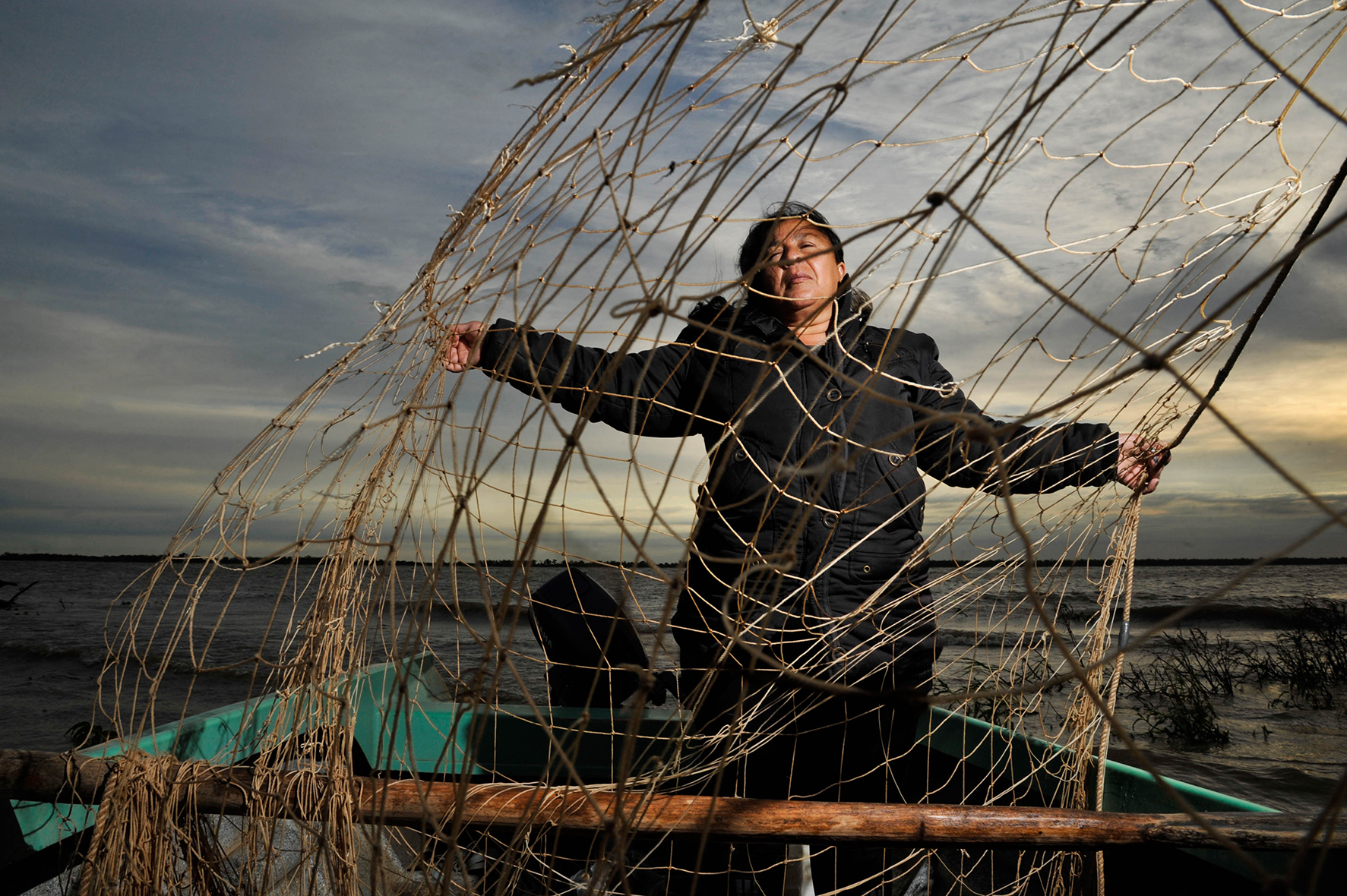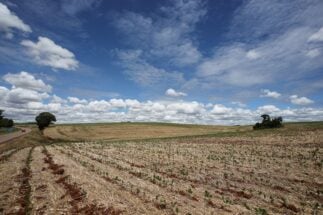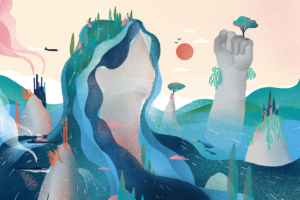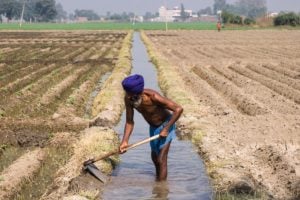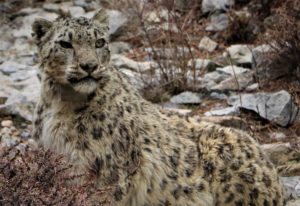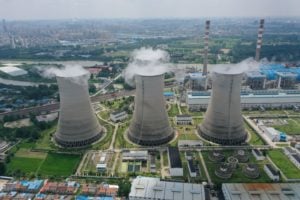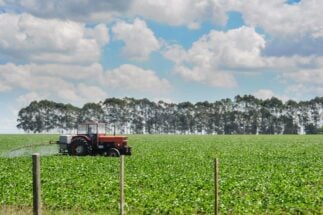“Es lo que hay,” says María Barrios, shrugging her shoulders. It is what it is. These words are being heard more and more frequently in the shed of the Fisherton–Pueblo Esther worker’s cooperative, strategically located next to the Paraná river on the Balbi bajada – a riverbank about 30 minutes by car from the city of Rosario, Santa Fe province’s most populous city.
Editor’s note
This article first appeared on Territorios y Resistencias, a collaborative project led by Chicas Poderosas Argentina, with the support of the US Embassy in Argentina
As she speaks, the fisherwoman and leader of this cooperative looks at the five silver shad fish she pulled out of the river, at the end of a long day scouring the nets without much success. One by one, she places them on a board, measures them with her hands and plunges the knife into the soft white belly. It takes her only a few minutes to expertly debone the day’s meagre catch.
In the early days of previous springs, María would have returned with her boat full of fish. But in the last two years, misfortune has struck this small-scale fishing village like a plague. In mid-2019, before the onset of the Covid-19 pandemic, the Paraná river began to see a dramatic decline in its flow, which, by 2021, led to its lowest water level in more than 70 years.
The drop in the level of the river, traditionally one of the strongest in the Americas, has not only been abrupt, but also prolonged. Among the determining causes for this historic drop is a deficit in precipitation in the Brazilian basins of the Paraná, Uruguay and Iguazú rivers, amid greater climate variability as a result of global warming, and profound changes in land use due to the extension of the agricultural frontier along the entire basin.
After analysing measurements of the average daily flows of the Paraná River over 117 years, from 1905 to 2021, researchers from the National University of Rosario concluded that “the decrease observed in the years 2020 and 2021 can be substantially related to an average annual rainfall well below those considered normal in the previous period.” The authors, Pedro Basile, Gerardo Riccardi and Marina García, presented their findings at the university’s 15th Conference on Science, Technology and Innovation.
The low water level of the last two years has transformed the landscape of the Paraná’s wetlands. The shores have widened, revealing the sand and silt that give the river its brown colour, and several wonders that had been buried by the water have emerged: fragments of an old bridge in the city of Santa Fe, old anchors in the town of Ramallo and, in the city of Paraná, a chapel of the Virgin of Guadalupe that had been submerged by a flood at the beginning of 1991.
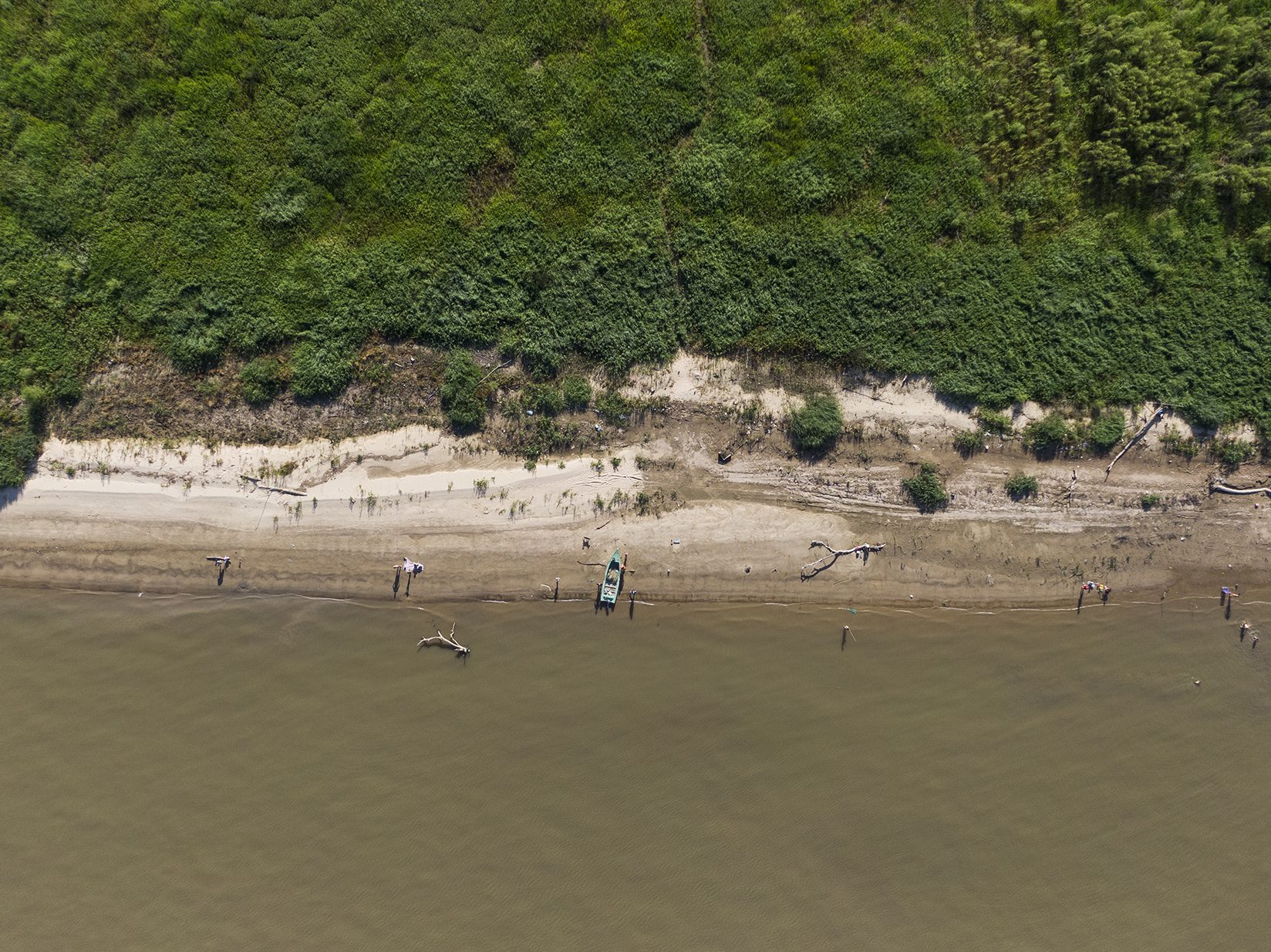
Around the characteristic islands that dot the Paraná’s course, the changes were more dramatic. Many of the streams and lagoons that depend on the river’s main channel dried up and many fish lost part of their breeding grounds.
The five shad that María cleans in the fishers’ cooperative shed are another face of the environmental crisis. “The lagoons where we used to go to look for fish are dry. On the island there are now planted fields, there are machines, there are cows. Everything has been destroyed,” the fisher says. “If this continues, in two years we will have no fish left.”
Resisting together
The Fisherton cooperative, in the town of Pueblo Esther, was founded ten years ago. It is made up of 19 people, seven of whom are women, most of them dedicated to the production of fish-based foods.
María is in charge of the project, which seeks to add value to the work of local fishermen and fisherwomen. The group includes those who fish, those who clean and skin the catch, and those who prepare the empanadas, meatballs, breaded fish or cannelloni that are sold frozen at fairs and markets.
“The life of the fisher and his family is arduous,” says Marcela Báez, María’s sister-in-law and head cook. The adjective is not enough to sum up the many hours of work out in the open: at night, at dawn, in the cold, in the rain, in the sun, with mosquitoes, with tired bodies and bone-chilling humidity, and without a fixed salary or social benefits.
The cooperative was born as an attempt to mend this chain of hardships, to improve the fishers’ income and, at the same time, to protect the resource from the voracity of the processing factories that pay little for the fish: even in times of scarce supply, like the current one, the payment for a kilo of shad can reach as low as 100 pesos (US$0.94) – barely enough to buy half a kilo of bread, and up to five times less than what it is sold for in some supermarkets in the centre of Rosario.

The community project became essential as the Paraná’s flow declined. In the winter of 2021, the beautiful and wild river, the second longest in South America after the Amazon, attracted the attention of the Argentine press and international media, including the New York Times.
The Paraná “shriveling” or “plummeting” were some of the headlines that tried to summarise an environmental tragedy that is straining the pulse of this vital waterway. In 2020, 70% of the grains, 96% of the vegetable oils, and 96% of the flours that were exported – equivalent to 37% of Argentina’s total exports – were transported along the river, according to a report by the Rosario Stock Exchange.
But these numbers are not enough to measure the consequences of the receding waters. For María, Marcela and their colleagues in the cooperative, the decline of the river is not only hurting their meagre economy but also their history, and sowing concern about the future.
With a cumbia rhythm
To get to Balbi you have to cross an area of agricultural land near Pueblo Esther and pay attention to the signs, painted without much typographic effort, announcing “hay pescado” (fish available). On weekdays, not a soul passes through these dirt streets. But on Saturdays and Sundays, people flock to the beach, and cumbia music plays.
On Google Maps, the area is listed as Bajada Barbi – but that is not the correct name. The neighbourhood bears the surname of Don Balbi, one of the first fish gatherers in town, who built his ranch on a shore formed at the Paraná River and the mouth of the Frías stream, an archaeological site where palaeontologist brothers Carlos and Florentino Ameghino arrived in 1907. Over time, the area became populated by fishing families, whose houses face the river delta. Today, there are around 50 of them, although not all make their living from fishing.
The geography of this area of the river began to change 20 years ago, when Argentina positioned itself as the world’s main supplier of soybean meal and oil.
On the steep slopes of this stretch of the Paraná grew the ports of the multinationals Cargill, Louis Dreyfus and Toepfer, barge repair industries such as Ultrapetrol – which gradually reshaped the water’s edge – and also gated communities with bucolic names such as Fields of Esther, Land of Dreams or Blossoms of Paraná.
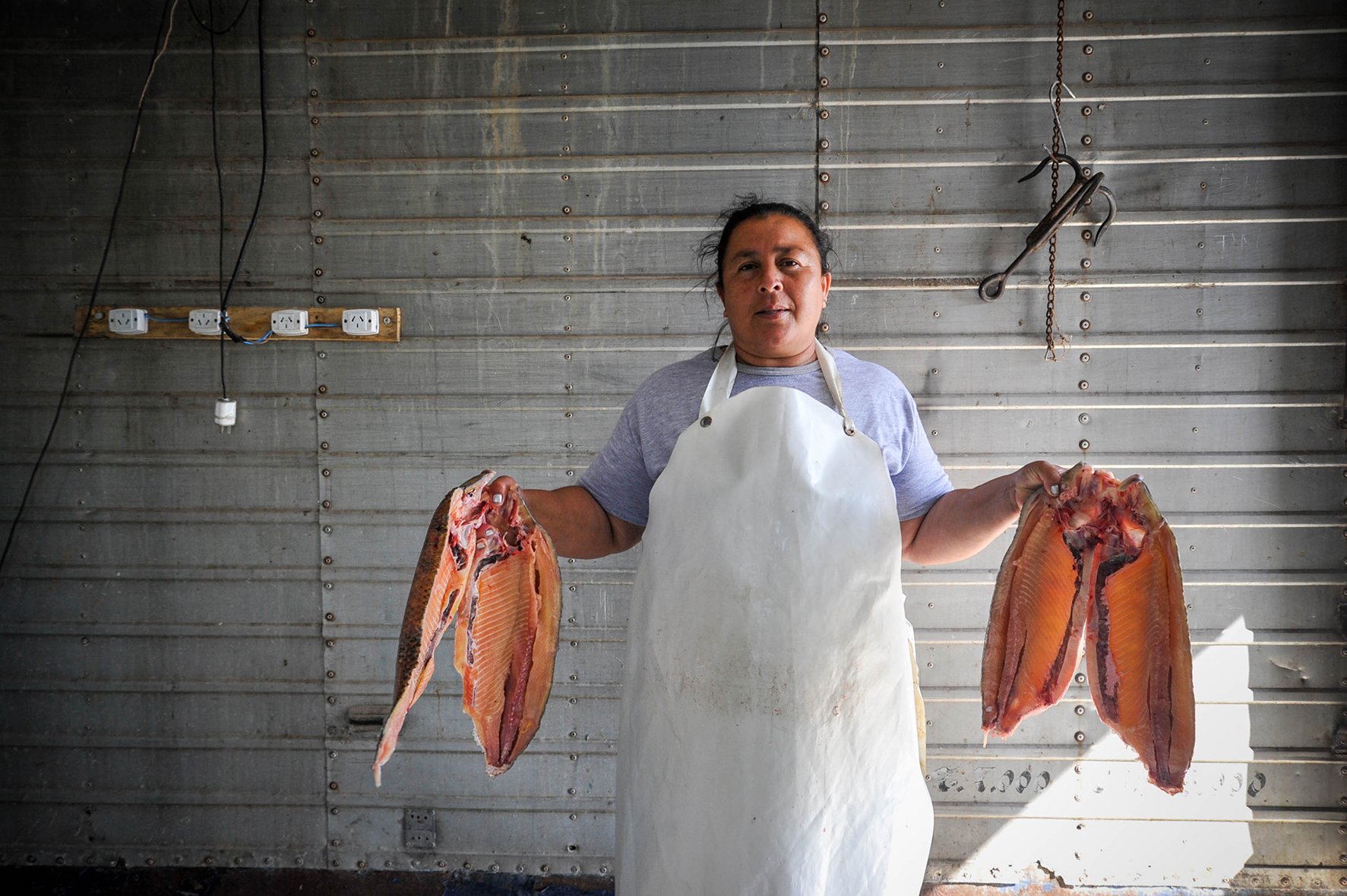
Each new development was celebrated as a sign of progress. But the illusion, they say here at Balbi, faded quickly. “Some of our kids managed to get to work with the barges, but in three months they were thrown out,” says one of the fishers. “It hurt us a lot. It reduced our fishing ground, forced us to abandon it and run away.”
The fishing ground is something like the fisher’s sacred place. It is the area of the river where they can work calmly and cast their nets, without fear of snagging them, breaking them or losing tools. The size of these areas is measured by the time it takes to canoe through them.
Traditionally, the fishers on the Balbi riverbank would cast their line over the mouth of the Frías stream after sailing for an hour. But the growth of industry forced them to move further south and narrow the area, getting dangerously close to the edge of the navigation channel, the deepest and most swiftly flowing part of the river. “Today, we have little more than half an hour of [time on the] water left,” María grumbles.
The women of the bajada
María Barrios has dark skin, black eyes and long hair, which she hides under a white bonnet as she handles fish in the cooperative’s shed, a brick building with a tin roof, built by the community itself. It smells of bleach this afternoon. María came to Balbi when she was a child. More than once, in times of flooding, the river came within a few metres of the building, which was erected on an uneven section of the riverbank.
Now, due of the low water level, getting to the Paraná is not simply a walk to the bottom of the slope, but another 70 metres, sinking your boots in the mud, among tall reeds, fragile willows, fragrant bushes and weeds. These began to occupy the space when the water began to recede, slowly at first, and violently this past winter.
Every Tuesday, Wednesday and Thursday – the days exempted from the ban on commercial fishing enforced by the provincial government as a result of the low water – María walks this path to make a living. In the province of Santa Fe alone, there are 4,020 families who depend on fishing and some 1,628 are small-scale fishers, according to the latest survey by Santa Fe’s department for environment and climate change.
Women are in the minority in this universe of hard work. According to the same list, only 85 fisherwomen have commercial fishing permits and another 80 have subsistence permits – that is, only for their own or their families’ consumption. Traditionally, the activity is taught and learned from fathers to sons. And in this whimsically masculine world, women have other tasks: they are the ones who clean, prepare or cook the fish. They are not the ones who take it out of the river.
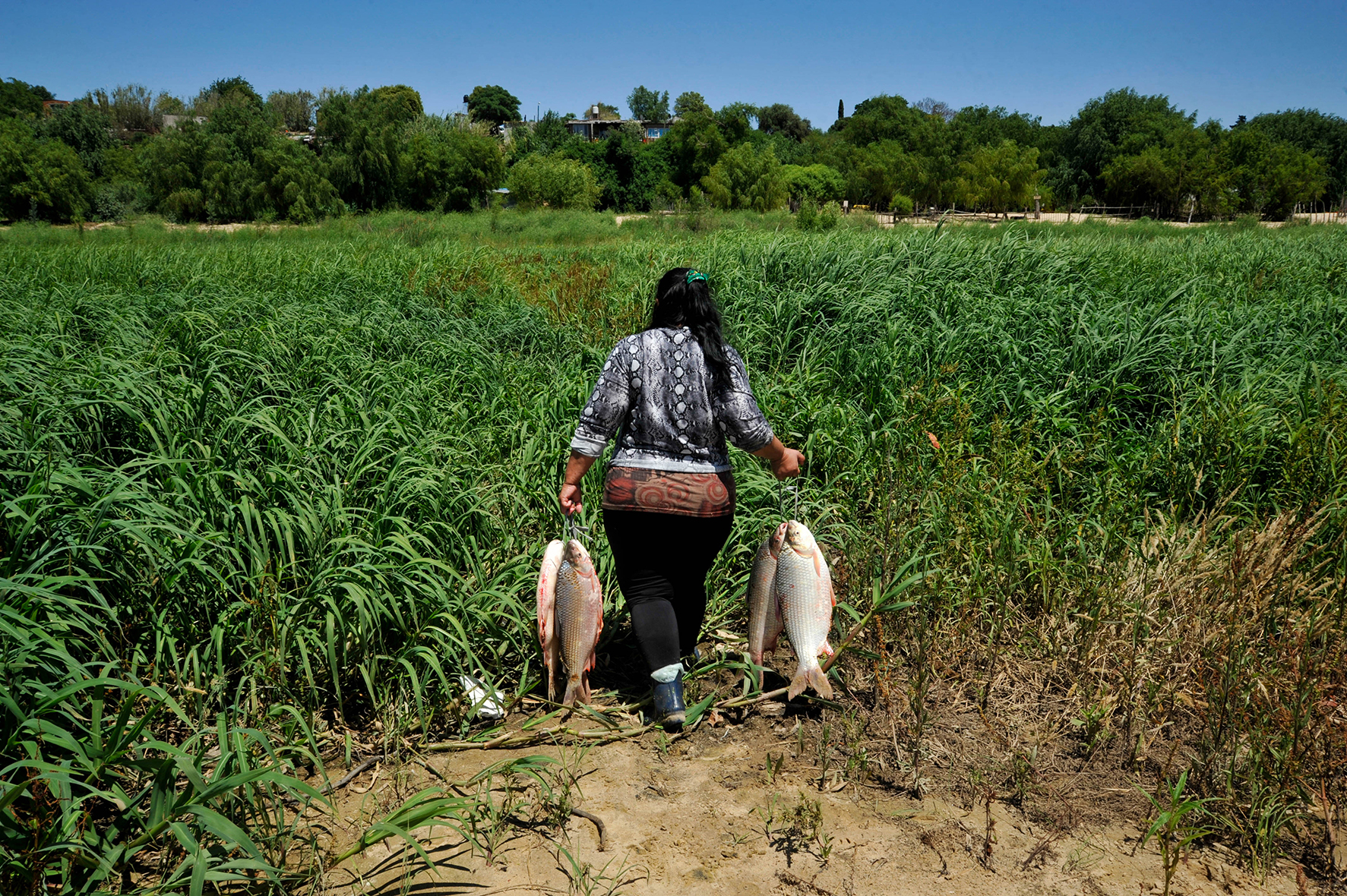
María says that she learned to fish from her father. Although her father never encouraged her, she started fishing to feed her children. If her story could be summed up in a series of significant moments, it would go something like this: At the age of nine, she worked with her mother on a strawberry farm; at the age of 13, she and her brothers and sisters were already medieros, those who cultivate a farm and share the profits with the landowners. Then she worked in a factory, just for a few months as she never got paid; and at the age of 20, she told her father that she was going to start fishing. She rented herself a boat and went out on the river.
María learned to weave and build nets, to set them, to cast lines, jars and hooks. She learned the cycles and the arrivals of the different fish; how to look for them in the river, in the lagoons of the island and, above all, she says, learned to defend the price of the fish. She then took charge of the cooperative.
María knows the comings and goings of the river by heart. But she has never seen a low water level like the current one.
The flow of the Paraná dances to the rhythm of the rainfall in its upper basin, especially in southern Brazil, Paraguay and northern Argentina. Those who study these fluctuations have previously measured rises and falls in the same year, falls in autumn and winter and rises in spring and summer, and also over longer periods, with dry years and wet years. To their credit, these records have a long history, dating back to the construction of the port of Rosario in the late 19th century.
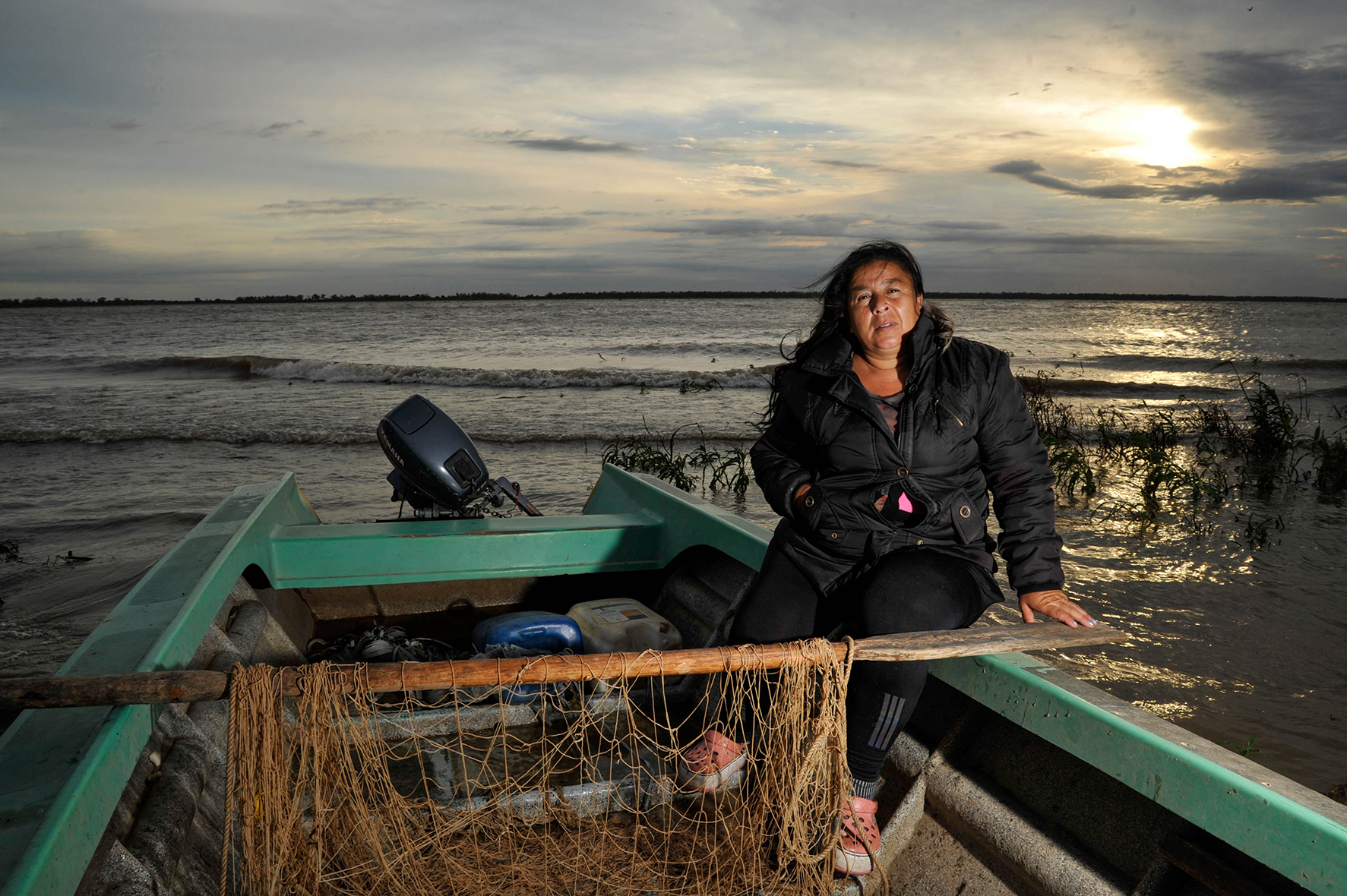
During the summer of 2020, while the news talked exclusively about the spread of Covid-19 cases, the National University of Rosario’s Centre for Hydro-Environmental Research (CURIHAM) began to notice that the low water was running outside of the usual margins. The following winter, for almost a month, the height of the Paraná was below zero on the scale used to measure its level in the Rosario port area, while the average height for that time of year, according to the National Water Institute, is three metres. At this point, there was no longer any doubt that this was an extraordinary situation.
According to CURIHAM researchers Gerardo Riccardi and Pedro Basile, the nearly 140-year history of measurements of Paraná levels has seen numerous severe events. But since the beginning of the 1970s, the river’s hydrological regime has changed, with more extreme maximum and minimum values.
The current low is comparable to that of the years 1944 and 1945, when two minimum annual levels were recorded: -1.39 and -0.81 metres at Rosario, respectively.
For specialists, the fluctuation in the river’s hydrological regime since 1972 is explained by various factors observed in the basin from the 1960s onwards, such as increases in rainfall on a regional scale, deforestation and changes in land use, which have contributed to greater runoff in the basin.
One thing is clear: the river today is no longer the same as the river of 1944. In seven decades, the population of the cities around it has grown and the number of housing developments multiplied, as have the number of industries located on its coast, the number of hectares cultivated throughout the basin and the number of ships transporting the harvest, among other factors. Everything has changed.
A river in emergency
A week before the end of July 2021, Argentina’s national government declared a water emergency for territories located on the banks of the Paraná, Paraguay and Iguazú rivers.
The document, signed by President Alberto Fernández, states that the deficit in precipitation in the upper basins “is one of the determining factors for the current historical low water level, considered the most significant in our country in the last SEVENTY SEVEN (77) years”. The capital letters are from the original.
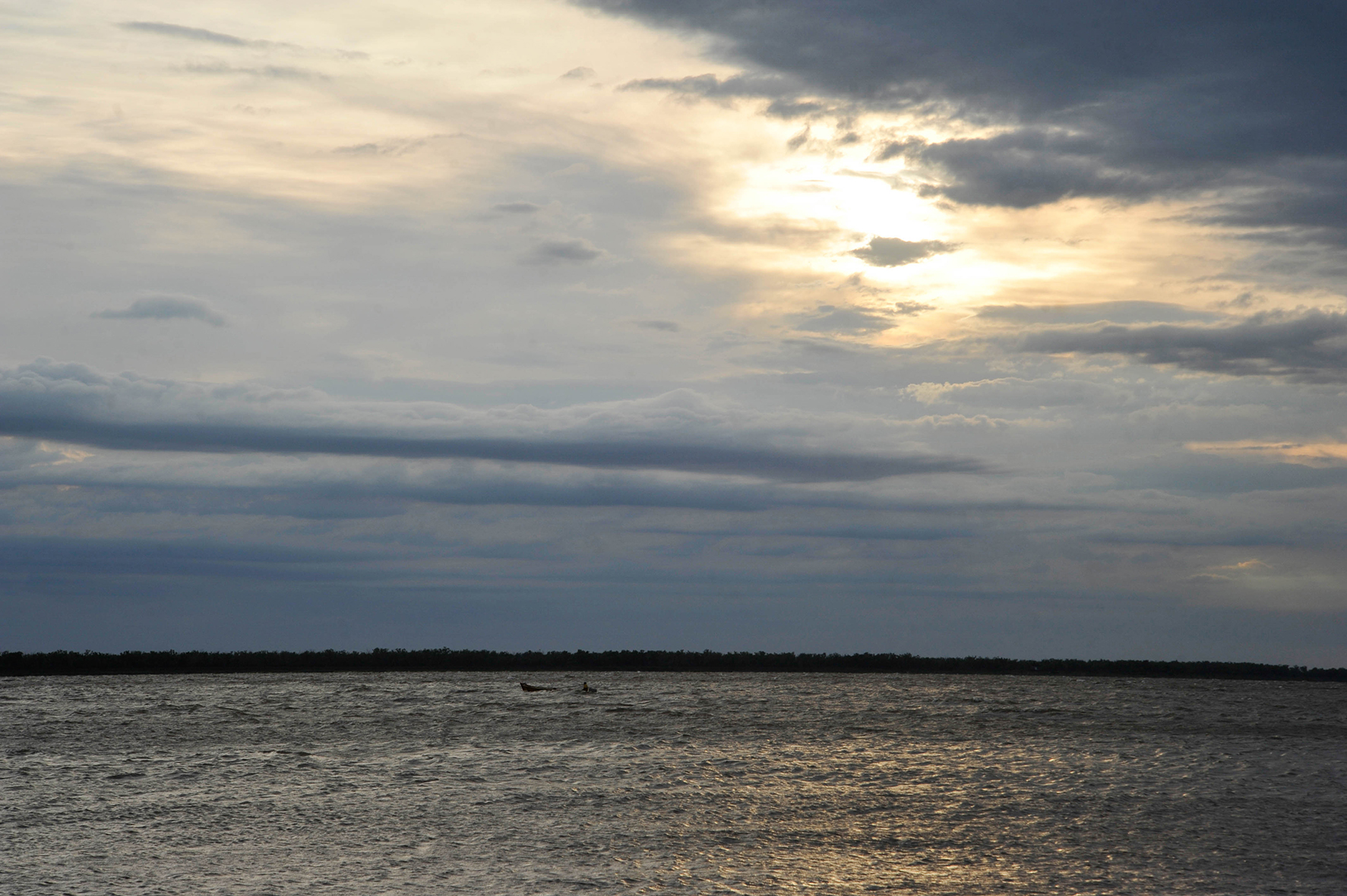
The decline in levels in these watercourses, the decree continues, could harm “the supply of drinking water, navigation and port operations, the generation of hydroelectric energy and economic activities linked to the exploitation of the basin.”
The area affected by the low water is not only extensive but also extremely diverse. The withdrawal of the waters is affecting seven provinces: Formosa, Chaco, Misiones, Corrientes, Santa Fe, Entre Ríos and Buenos Aires, which together make up 809,000 km2, a third of the country’s continental surface area, and 24 million people, or more than half of the Argentine population.
For environmental organisations within the Multisectorial Humedales conservation group, the emergency in the river was declared too late, and was mainly motivated by the need for works to adapt the drinking water supply systems, and losses generated in the transport of grains. According to data from the Rosario Stock Exchange, between January and mid-September 2021 alone, the drop in the height of the river meant a loss of 620 million pesos (US$5.8 million) in exports of soybean meal and oil. The economy, the organisation warns, has prevailed over the need to protect the environment.
After declaring the emergency, the national government announced that it had begun to negotiate with the Inter-American Development Bank (IDB) the possibility of adding US$100 million to the US$300 million it had already committed to the country last year to deal with events such as floods and earthquakes.
In September, the then-Cabinet Chief, Santiago Cafiero, announced that work would be authorised through the Water Emergency Fund, which is administered by the National Agency for Water and Sanitation Works (ENOHSA) and involves investments of 1 billion pesos (US$9.4 million) to assist the affected provinces and localities.
Santa Fe joined the water emergency in August, a month after the national decree. But, according to the local ministry for environment, the provincial accounts had not yet received a single peso from the emergency fund by the end of October 2021. “We have already sent all the documentation, with the corresponding requirements, to the national cabinet office. We are now waiting for the allocation of resources,” a source explained.
A summer storm
Micaela Tosco is 24 years old and has eyes very similar to those of María, her mother. She does not live in the Balbi neighbourhood, but in the south of Rosario. Every morning, she travels an hour by bus to go to work at the cooperative.
She was very young when her mother started fishing and can no longer remember the first time she went with her in the boat, but she remembers the last time. It was after a summer storm – which often form quickly and hit the land violently – found them in the middle of the river. The waves were huge, the young girl recalls. Her mother just about managed to throw her and her siblings on their bellies on the floor of the boat and ask them to cover their eyes. As the woman fought the river, she thought they would not make it, but she managed to tame it and reached the shore. Since then, none of María’s seven children have fished with her.
The memory arrives like a bird at the table, where the women are turning some 10 kilos of fish mince into empanadas, pies, meatballs, rolls or sausages, all homemade.
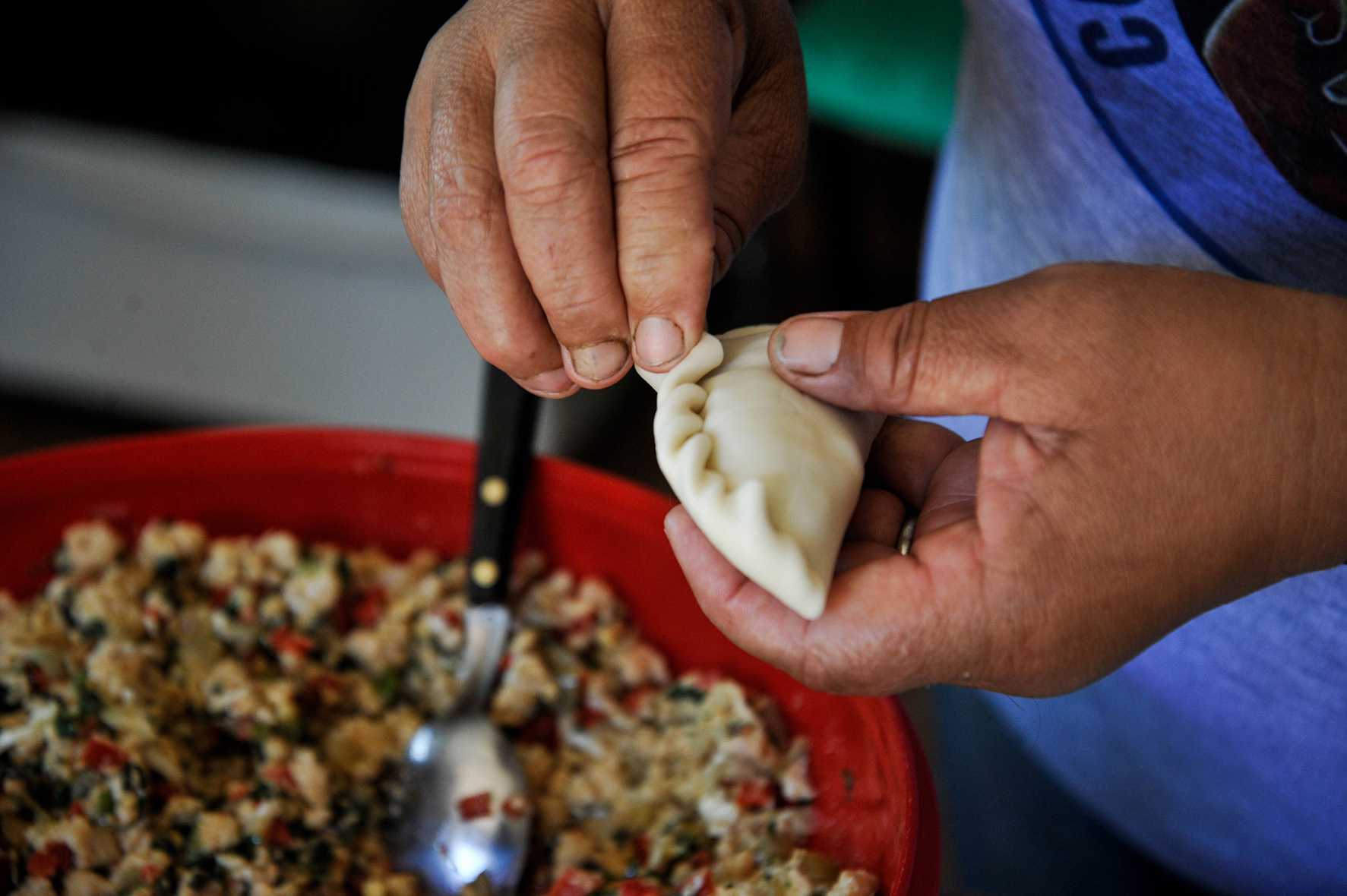
In the background, the radio talks about the COP26 climate summit in Glasgow. More than 10,000 km – and many other things – separate Pueblo Esther from the Scottish city, but the concerns are the same. “All of us who are fishers are aware of what is happening with the weather,” comments María and adds that it is no longer so easy to anticipate the arrival of species such as tarpon, bogue or pacu; and that the time between the storms forming in the sky and their precipitation is becoming shorter and shorter.
The fish of the Paraná follow a popular saying: el grande se come al chico, the big (and often more powerful) one eats the small one. At the beginning of this chain is the shad, whose eggs and larvae feed other species such as the bogue, the surubí or the dorado. But the shad requires the natural oscillations of the river level for its reproduction, and the delta lagoons where its young develop.
The EBIPES project (the biological and fishing evaluation of species of sporting and commercial interest) was set up in 2005 to improve knowledge of the fishing resources in this area of the river, and involves the national Ministry of Agriculture, Livestock and Fisheries and the provinces of the middle and lower Paraná River. To determine the state of the situation, studies are periodically carried out on the variety, quantity and size of the species.
The 2021 evaluations indicated that, due to the low water level, there have already been two years in which the reproduction numbers of the shad was abnormal. Gaspar Borra, an environmental lawyer and advisor to the Ministry of Environment of Santa Fe, warns that the situation casts uncertainty on the future of the resource. After two years of very low reproduction, “we have to see what happens this summer because, although the river is rising, the projections are not very encouraging and, if the low flows are maintained, this will not be a good reproduction season either.”
For this reason, Borra says, measures have been put in place to reduce fishing pressure by closing the catch on certain days and limiting the fish export quota. In 2019, the Argentine Littoral region exported 18,000 tonnes of shad. That year, all the Littoral provinces (Entre Ríos, Santa Fe, Corrientes and Chaco) agreed to lower the export quota by a third. “For there to be fish tomorrow, there has to be fish today,” Borra points out, but in any case, he stresses that the environmental variable cannot be dissociated from the social or economic. “There are communities that, for cultural reasons, subsist on the river. We have to find a balance,” he adds.
Biodiversity
The Paraná is home to some 200 species of fish with a unique dynamic, due to their ability to adapt to the river’s irregular flows of drought and flooding. Looking at all this richness, not just at the fish of commercial interest, “we can say that very little is known about what happens in the river,” says Andrés Sciara, dean of the faculty of biochemical and pharmaceutical sciences at the National University of Rosario, and a specialist in biotechnology in aquaculture of native species.
Amid this irregularity, there are already species that have practically disappeared from these coasts. The pacu is a clear example: many fishers in the area cannot even identify it, confusing it with palometa or piranha. The same is true of the manguruyú, one of the largest fish in the basin. At least one scientific study also shows the vulnerability of some rays, especially the giant river stingray, affected by unintended overfishing and habitat loss.
Vanina Villanova is a doctor in biological sciences, a researcher at Conicet – the national government research agency – and the laboratory of aquatic biotechnology at the Paraná River Aquarium in Rosario. Every now and then, she says, fishers bring her strange catches. The last one was a baby manguruyú, which its captor considered an exotic species.
The scientist explains that fish fauna is a resource to be taken care of, and which is under stress from fishing, whether it is large-scale for export, by-catch or sport fishing. Changes in their environment, such as the dredging of the river and the modification of watercourses on the islands, conspire against the good health of the species.
“While the dynamics of these fish allow them to avoid the river’s low waters, we now also have greater human activity of all kinds: pollution, fishing, transport, changes in land use in the wetlands and land development that have repercussions throughout the chain,” says the expert.
Specialists consider the conservation of natural areas a good practice to preserve these species – especially in the areas where the fish reproduce – along with the control of export quotas. Some suggest eliminating the international sale of freshwater fish as another tool for preservation: “These are measures that have a political cost and are a bit drastic, but we should think about them,” says Villanova.
‘I wouldn’t change my life for anything’
In February 2005, the first meeting of the provincial fishing council was held. It is a body made up of 20 people, representatives of the legislative chambers, provincial, municipal and communal officials, stockpilers, processing factories, tourism entrepreneurs, sport fishing clubs, NGOs, universities and regional fishing committees. The fishers also sit at this table, which meets about six times a year to analyse the state of the sector.

The Paraná’s low water level and its consequences on fishing was the big topic of the recent meetings, where, María says, they could discuss on equal terms with biologists and politicians. “To be there, we had to learn, we had to prepare a lot, and little by little we are making ourselves heard,” she says, assuring us that the voices of the river workers enrich the debate.
Traditionally, she says, “we fishers have been persecuted for everything that happens in the Paraná.” However, she stresses that it is the real-estate pressure on coastal land, the dredging of the river, the intense traffic of ships or the use of pesticides that damages the river. “We fishers always appear to be the only ones to blame for everything,” complains María. Micaela and Marcela share her anger.
“I wouldn’t change my life for anything,” says María, showing a tattoo she proudly wears with the image of a beautiful goldfish jumping over the water. She got it stamped on her back a few years ago when she turned 40, as rheumatism and asthma were pushing her to stop fishing.
But she says that the river still calls to her, that the water calms her. When the low water level came, many fishers left the river to do other jobs and there was a shortage of fish for the cooperative. But she still hasn’t been able to stop fishing.
This story was originally published on Territorios y Resistencias, a collaborative project led by Chicas Poderosas Argentina, with the support of the US Embassy in Argentina. Research was carried out between October and December 2021 by a team of more than 35 women and LGBTTQI+ people from across Argentina.
